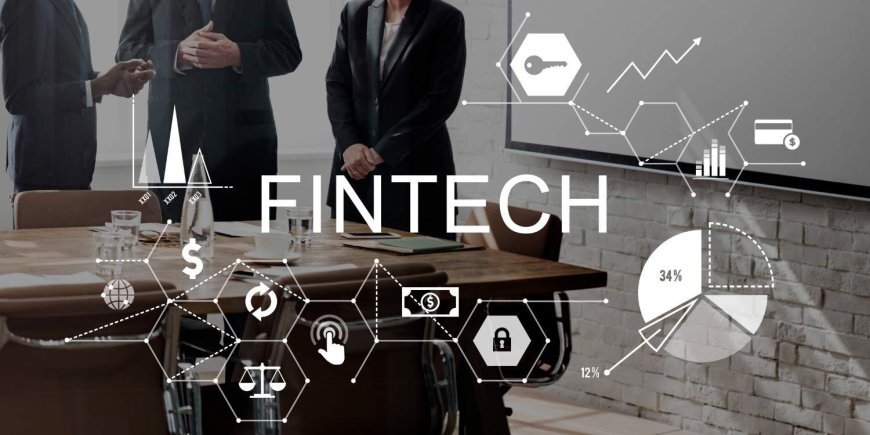Cybersecurity in Fintech: Building Digital Trust Through Strategic Security Integration

In the modern digital economy, financial technology (Fintech) is transforming how individuals and businesses conduct financial operations. From mobile apps and robo-advisors to scalable white label payment gateway solutions, Fintech continues to drive efficiency and convenience. However, this advancement comes with increased exposure to cyber threats, placing cybersecurity at the forefront of Fintech’s sustainable growth strategy.
Cybersecurity as a Core Business Function
Unlike traditional banks, Fintech companies operate in fully digital environments. Their reliance on cloud-based infrastructure, mobile platforms, and third-party APIs accelerates innovation—but also increases vulnerability. Therefore, cybersecurity is not a reactive measure; it must be a core component of every digital product and service from the outset.
Prominent Cyber Threats Facing Fintech
-
Phishing – Used to trick users into revealing sensitive login credentials
-
Data Breaches – Unauthorized access to confidential financial and personal information
-
Identity Theft – Exploiting leaked data to commit fraud
-
Ransomware – Disabling operations and demanding payment for data recovery
Even minor oversights can result in regulatory fines, loss of client trust, and operational disruptions.
The Escalating Cyber Threat Landscape
Cybercrime targeting financial services has surged by over 50% in recent years, with Fintech startups and SMEs being particularly at risk. These firms often lack the established security infrastructure of legacy institutions. As the use of digital wallets, decentralized finance platforms, and embedded finance grows, ensuring security becomes not just a necessity but a strategic priority.
Essential Components of Fintech Cybersecurity
To build a secure operational environment, Fintech firms should establish a layered cybersecurity framework consisting of:
-
End-to-End Data Encryption
Strong encryption standards such as AES-256 protect data in storage and during transfer. -
Multi-Factor Authentication (MFA)
MFA provides an additional verification layer, reducing the chance of unauthorized access. -
API Security Measures
Authentication tokens, encrypted data exchanges, and access controls protect APIs from misuse. -
Frequent Security Assessments
Regular penetration testing and third-party audits help uncover vulnerabilities—especially important for white label gateway platforms serving multiple clients. -
Real-Time Threat Intelligence
AI-powered monitoring tools can detect unusual patterns and respond to threats as they occur.
Meeting Regulatory Demands
Adhering to global and regional security regulations is critical for Fintech success. Key compliance standards include:
-
GDPR – Ensures data privacy within the EU
-
PCI-DSS – Regulates the secure processing of cardholder information
-
PSD2 – Promotes secure and competitive payment services across Europe
White label payment gateway providers must ensure their systems—and their clients’—remain compliant to avoid reputational and financial consequences.
Trust: The New Currency in Fintech
In a data-driven industry, trust is an essential asset. Firms that prioritize cybersecurity not only protect their users but also build stronger relationships with regulators, investors, and business partners. Clear communication about security measures and consistent adherence to best practices help establish long-term brand credibility.
Fintech’s Unique Cybersecurity Hurdles
The Fintech ecosystem faces several sector-specific challenges:
-
Rapid Development Cycles – Quick product rollouts can lead to insufficient security reviews
-
Integration with Legacy Systems – Older infrastructure can introduce vulnerabilities
-
Diverse Security Requirements – Each product type—such as crypto platforms, payment gateways, or peer-to-peer lending—requires tailored security solutions
Recommended Security Practices for Fintech Firms
To mitigate risk and ensure long-term stability, Fintech companies should:
-
Adopt a Zero Trust Architecture where every user and device must be verified
-
Provide continuous cybersecurity training for staff and customers
-
Partner with cloud providers certified in ISO 27001, SOC 2, or similar standards
-
Implement DevSecOps to integrate security into development workflows
-
Maintain an up-to-date environment with routine patches and software updates
Harnessing Emerging Technologies
Artificial Intelligence
AI enhances security through real-time behavioral analytics, improving both fraud detection and response speed.
Blockchain
Blockchain ensures data integrity through immutable records, making it particularly useful in high-volume transaction environments such as white label payment gateways.
Security Responsibilities in White Label Payment Gateways
White label payment gateway solutions offer businesses scalable, branded payment infrastructure. However, with flexibility comes responsibility. These businesses must:
-
Perform regular security updates and vulnerability patches
-
Ensure full PCI-DSS compliance
-
Encrypt all payment data
-
Use tokenization to safeguard cardholder information
-
Monitor transactions 24/7 with intelligent fraud detection tools
Selecting a vendor with a proven cybersecurity track record is crucial for platform resilience and client protection.
The Future of Cybersecurity in Fintech
As cyber threats grow more complex, Fintech companies must prepare for what’s next:
-
Biometric Verification – Offers fast, secure identity authentication
-
Decentralized Digital Identity (DID) – Enables users to control their own digital identity
-
RegTech Solutions – Automate and streamline compliance
-
Quantum-Resistant Encryption – Builds resilience against future quantum computing threats
Final Thoughts
Cybersecurity is no longer just an IT function—it is central to Fintech’s mission of trust, compliance, and innovation. Whether launching a new product or scaling a white label payment gateway platform, firms must embed security across every layer of their operations.
By doing so, they position themselves not only to survive, but to thrive in an increasingly digital and regulated financial ecosystem.
What's Your Reaction?






























































